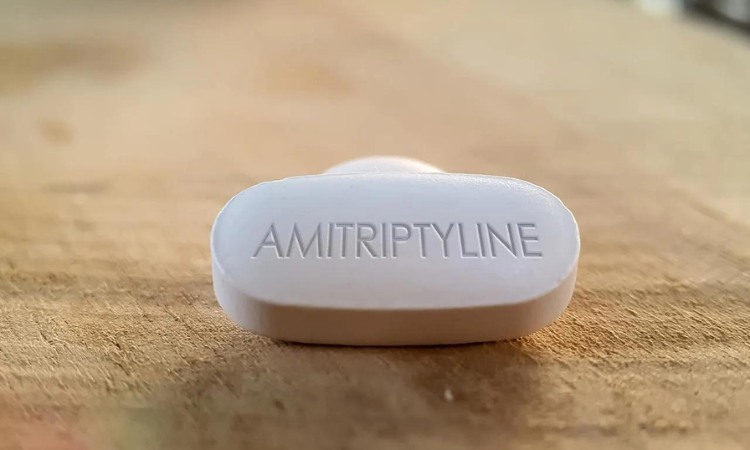Key Takeaways
- Vraylar can significantly improve mental health in individuals with bipolar disorder and schizophrenia.
- Its unique mechanism of action targets both dopamine and serotonin receptors, offering a different approach to treatment.
- Clinical trials show Vraylar effectively reduces depressive symptoms in many patients.
- Dopamine D3/D2 receptor antagonism is central to Vraylar’s effectiveness.
Vraylar’s Role in Enhancing Rehab Success
When it comes to rehab for mental health conditions like bipolar disorder and schizophrenia, Vraylar is a game-changer, especially for those who have struggled with traditional therapies.
Its dual action on dopamine and serotonin receptors means it can help regulate mood more effectively and reduce symptoms, making it a powerful therapy option in the journey towards recovery.
At Relevance Recovery, we’ve seen the transformation in our clients firsthand, and it’s nothing short of remarkable.
Evidence of Vraylar’s Impact on Depression Symptoms
In 6- and 8-week trials, patients who added Vraylar to their antidepressant regimen saw a significant reduction in overall depressive symptoms, even at the lowest dose of 1.5 mg/day.
These findings aren’t just numbers on a page; they represent real people who have found a new lease on life. Imagine waking up and feeling the weight of depression lift, day by day, bit by bit.
That’s the kind of change Vraylar can initiate. And it’s not just about reducing sadness or emptiness; it’s about regaining the ability to enjoy life’s moments, big and small.
Understanding Vraylar’s Mechanism of Action
To truly appreciate Vraylar’s potential, we need to dive into how it works. This medication doesn’t just wander aimlessly through the brain. It has a specific target: neurotransmitter receptors.
By engaging with these receptors, Vraylar can help correct the imbalances that often lie at the heart of mood disorders. It’s like a skilled archer hitting the bullseye, bringing the brain’s chemistry back into alignment.
The Science of Dopamine D3/D2 Receptor Antagonism
Dopamine is a key player in our mood and motivation. Vraylar’s ability to act as a dopamine D3/D2 receptor antagonist means it can help modulate this crucial neurotransmitter’s activity.
It’s not about shutting down dopamine production; it’s about fine-tuning the system to avoid the highs and lows that come with mood disorders. By doing so, Vraylar can help create a more stable, balanced mood state, which is essential for successful rehab therapy.
Serotonin Receptors: Their Role in Mood Disorders
Serotonin is often called the ‘feel-good’ neurotransmitter because of its significant role in regulating mood and emotions. Vraylar’s interaction with serotonin receptors, particularly the 5-HT1A type, is part of what makes it so effective.
By enhancing serotonin’s effects, Vraylar can help alleviate the symptoms of depression and anxiety that often accompany mood disorders. It’s like turning up the brightness on a dimly lit path, providing a clearer direction towards emotional stability.
Real-World Outcomes: Vraylar in Clinical Trials
The true test of any medication lies in its performance in real-world scenarios. Clinical trials for Vraylar have provided us with a wealth of data, demonstrating its ability to make a positive impact on the lives of those dealing with mood disorders. These trials are rigorous, involving participants who have lived the reality of these conditions, and the results speak volumes about Vraylar’s potential to transform rehab therapies.
Examining the Trial Data: Efficacy in Depression Treatment
- Reduction in depressive symptoms was observed across multiple studies.
- Participants reported feeling more stable and capable of managing daily tasks.
- Improvements were noted as early as 1.5 mg/day, with the option to adjust dosage for greater relief.
- Long-term studies indicated sustained benefits with continued use of Vraylar.
- Quality of life measurements showed significant enhancements alongside symptom reduction.

These outcomes can greatly help individuals who have struggled to find effective treatment options. Vraylar’s ability to alleviate depressive symptoms is a testament to its potential as a cornerstone in mental health rehab.
Breaking Down the Research: Vraylar’s Performance Metrics
When we talk about performance metrics, we’re looking at how Vraylar stacks up against the benchmarks for successful treatment. This includes not only the reduction of symptoms but also improvements in overall functioning and well-being.
Vraylar’s metrics are impressive, showing high rates of response and remission in clinical trials. It’s about more than just feeling less depressed; it’s about reclaiming the ability to live a full and satisfying life.
Managing Side Effects: Is Vraylar Well Tolerated?
Any powerful medication comes with the potential for side effects, and Vraylar is no exception. However, it’s important to note that most individuals find Vraylar to be well-tolerated.
Side effects are typically mild to moderate and often subside as the body adjusts to the medication. Our priority at Relevance Recovery is to ensure that each person’s treatment plan is tailored to minimize discomfort while maximizing the benefits of Vraylar.
Commonly Observed Adverse Effects of Vraylar
- Akathisia, a feeling of restlessness, is one of the more common side effects.
- Some individuals may experience nausea, particularly at the onset of treatment.
- Insomnia can occur but is often temporary as the body adjusts to the medication.
- Extrapyramidal symptoms (EPS), such as tremors or stiffness, are observed but can be managed.
While these side effects are worth noting, they should be weighed against the substantial benefits that Vraylar offers. It’s about finding the right balance, and with careful monitoring and support, most people find that Vraylar significantly improves their quality of life.
Comparing Vraylar’s Side Profile with Other Antipsychotics
When considering any medication, it’s crucial to understand how it measures up to others in its class. Vraylar’s side effect profile is generally considered to be more favorable compared to some other antipsychotics.
For instance, it tends to have a lower risk of weight gain and metabolic issues, which are common concerns with many antipsychotic medications. Moreover, the risk of experiencing extrapyramidal symptoms, while present, is less pronounced than with older antipsychotics.
This makes Vraylar an appealing option for those who have struggled with the side effects of other treatments.
Adjusting Treatment: Dosage and Application in Therapy
Every individual’s path to wellness is unique, and so is their response to medication. That’s why adjusting the dosage of Vraylar is a personalized process. It’s not a one-size-fits-all scenario; it’s a tailored approach that considers the individual’s specific symptoms, treatment history, and overall health.
At Relevance Recovery, we closely monitor our clients’ progress and make adjustments as needed to ensure the most effective and comfortable treatment experience.
Determining the Right Vraylar Dosage for Individual Needs
Finding the right dosage of Vraylar is a bit like tuning a musical instrument; it requires precision and attention to detail. The starting dose is typically low, often at 1.5 mg per day, to gauge how the individual responds to the medication.
From there, the dosage can be carefully adjusted upwards if needed. The goal is to find the lowest effective dose that provides the maximum benefit with the fewest side effects. This process is collaborative and ongoing, involving regular check-ins and open communication between the individual and their care team.
Tailoring Vraylar Use in Complex Rehab Scenarios
In complex rehab scenarios, such as when an individual has co-occurring disorders, Vraylar’s use must be skillfully integrated into the broader treatment plan. It may involve coordinating with other medications and therapies to address all aspects of the individual’s health.
The flexibility of Vraylar’s dosing allows for such nuanced application, ensuring that each person’s unique challenges are met with a responsive and adaptive treatment strategy.
Vraylar’s Versatility Across Disorders
Vraylar isn’t just a one-trick pony; its versatility across various mood disorders is one of its most compelling attributes. Whether it’s the manic highs of bipolar disorder or the debilitating lows of depression, Vraylar has shown the ability to provide relief.
Its broad application means that it can be a cornerstone medication in the treatment of multiple conditions, simplifying treatment regimens and helping individuals to manage their symptoms more effectively.
Broader Implications of Vraylar for Bipolar and Schizophrenia Patients
For those living with bipolar disorder or schizophrenia, Vraylar can help by managing the symptoms and giving potential for a better quality of life.
By stabilizing mood swings and reducing psychotic symptoms, Vraylar can help individuals engage more fully with their therapy, build stronger relationships, and pursue their goals with renewed vigor.
The broader implications of Vraylar’s effectiveness are profound, offering a path to a more stable and fulfilling life for many who have been searching for answers.
Reviewing Vraylar’s FDA Approval Journey and Expanded Indications
Vraylar’s journey to FDA approval was marked by rigorous testing and careful examination of its safety and efficacy. Initially approved for the treatment of schizophrenia and bipolar disorder, its indications have since expanded.
This expansion is a testament to Vraylar’s effectiveness and the positive outcomes observed in clinical trials. It’s important to recognize that such approvals are not handed out lightly; they come after a thorough review process that confirms a medication’s benefits outweigh any risks.
RelevanceRecovery for Rehab Therapies
At Relevance Recovery, we’re proud to offer an intensive outpatient treatment program that incorporates Vraylar into our comprehensive treatment plans. Our approach is rooted in understanding the complexities of addiction and mental health disorders.
We don’t just prescribe medication; we provide a full continuum of care that includes psychiatric evaluations, dual diagnosis treatment, and personalized support. Our founder, Daniel Regan, has a personal connection to recovery, which fuels our mission to deliver treatment that empowers our clients with passion and purpose.
Frequently Asked Questions (FAQ)
1. Is Vraylar Suitable for Long-term Treatment?
Yes, Vraylar is suitable for long-term treatment in many cases. It’s designed to be a part of a comprehensive treatment plan that addresses the ongoing needs of individuals with bipolar disorder and schizophrenia. Long-term use of Vraylar should always be monitored by a healthcare professional to ensure its continued effectiveness and to manage any potential side effects.
2. Who Should Avoid Using Vraylar?
Vraylar is not for everyone. Individuals with a known hypersensitivity to cariprazine or any of the ingredients in Vraylar should avoid it. It’s also important to discuss your full medical history with your healthcare provider, as certain conditions may require caution or suggest an alternative treatment. Pregnant or nursing women should consult their doctors, as the effects of Vraylar on the fetus or infant are not fully known.
3. Can Vraylar Be Combined with Other Medications?
Combining Vraylar with other medications can be done under the guidance of a healthcare professional. Because it can interact with other drugs, it’s crucial to provide your doctor with a complete list of medications you’re taking, including over-the-counter drugs and supplements. Your healthcare provider can then determine the best approach to your treatment, ensuring that Vraylar works harmoniously with your other therapies.
4. How Soon Can One Expect to See Results from Vraylar?
The journey towards improvement with Vraylar can be as individual as the people taking it. Some may begin to notice a shift in their symptoms within the first week, while for others, it may take several weeks to observe a change. It’s important to maintain open communication with your healthcare provider to track progress and make any necessary adjustments. Patience and persistence are key, as the body needs time to adjust to the medication and for the full therapeutic effects to unfold.
5. What Are the Alternatives if Vraylar Is Not Effective?
While Vraylar has proven effective for many, it’s not the only option. If you find that Vraylar isn’t the right fit for you, don’t lose hope. There are several other medications and therapies that can be explored. Alternatives may include other antipsychotics, mood stabilizers, or antidepressants. Additionally, psychotherapy, lifestyle changes, and support groups can be integral parts of a comprehensive treatment plan. It’s all about finding the right combination that works for you, and at Relevance Recovery, we’re committed to helping you do just that.
Conclusion
As we wrap up our discussion on Vraylar’s effectiveness in rehab therapies, it’s clear that this medication holds great promise for those struggling with bipolar disorder and schizophrenia. Its unique approach to balancing brain chemistry, along with its favorable side effect profile, makes it a valuable tool in the quest for better mental health.
Remember, recovery is a journey, not a destination. It’s about taking one step at a time towards a brighter future. With the right treatment, support, and determination, you can overcome the challenges of mental health disorders and reclaim your life.
Vraylar may be a part of that journey, and we at Relevance Recovery are here to guide you through it. For more information on how Vraylar can be integrated into your personalized treatment plan, contact us. Let us help you find your path to wellness.










